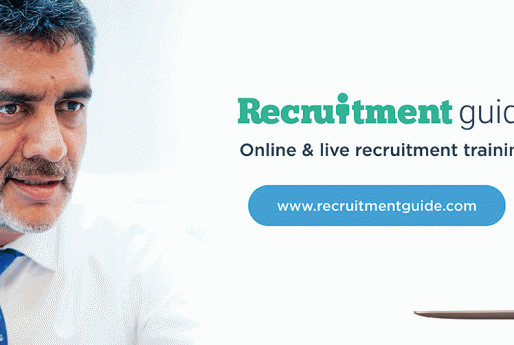 Returning to the workplace after a long absence doesn’t have to be a daunting task – here’s how to do it!
Returning to the workplace after a long absence doesn’t have to be a daunting task – here’s how to do it!
Learning a new skill if you want a career change is not as hard as you might think and then you just need to have a winning CV and give a great interview – and you’ll be in a great new job before you know it.
Today’s working women are better qualified than ever before. In 1963 a quarter of undergraduates were female, these days it’s slightly over half. In 1970 women’s pay was 65% of men’s, now it’s 81% and rising. However, many women are juggling raising a family with stressful careers to pay massive mortgages – their job’s as essential to the income of the home as that of their partner’s.
But jobs for life have disappeared and, unless pensions perk up, much of the baby boom generation, now hitting its 40s and 50s, will be working long past retirement age. In our lives, we’ll face more workplace changes than our mothers did. And to cope with these changes we need to keep our skills up-to-date. So if you’re thinking about heading back to work, our guide will equip you with the essentials to get started.
Get networking
Many people think networking means being pushy. Wrong. Effective networkers don’t come across like that as they have the right approach. So, first up, make a list of family members, friends and former co-workers and let them know about your job search. Give them a good idea of what jobs you are interested in as well as your relevant skills and experience. Ask those on your list to recommend other people to speak to about potential job opportunities and any publications or websites they think might be of use to you.
Don’t hesitate to contact people they recommend. Remember that social networking takes practise and almost everyone will be happy to help you as much as they can. Don’t forget to send a thank you note to those who provided you with a great job lead. Also, remember to keep everyone on your list updated on your job search and check back with them to get new job leads regularly.
Stay motivated
If you’re not in work and are finding it harder than expected to land your perfect job, don’t be disheartened. The key is to stay motivated, believe that the right opportunity is just around the corner, and be proactive about finding it. Consider any periods of unemployment as a golden chance to spend time polishing your CV, perfecting your interview technique and researching what you want to do. Treat finding a job like having a job – get up early, dress smartly and plan your day wisely – and the chances of landing your dream role will rocket.
Compile the perfect CV
A common mistake by jobseekers is to write long and rambling CVs. A short and easy read is the ideal. Employers want to know about your knowledge, skills and experience, but they don’t have time to trawl through lengthy tomes to extract information. Experience should be listed in reverse chronological order – start with your most recent job first and work backwards – and show a clear employment history with greater detail in the more recent jobs and very little in the earlier ones. Don’t leave gaps. If you have had a break in employment at any point, state why that was, for example, travelling.
Don’t overlook the importance
of your CV’s layout. It should present all the relevant information in an easy-to-read manner – remember, you only have 30 seconds to grab your prospective employer’s attention so don’t waste it. It may sound obvious but make sure your contact details are up-to-date.
Do your research
If your CV has done its job – the next stage is being invited to an interview. This is your chance to wow future employers face-to-face, but before you show up, do some research. Nothing impresses interviewers more than a thorough knowledge about the company and the role you hope to be taking on – it shows dedication and a real desire to work for them. When it comes to gathering info, the internet is an invaluable tool. Check out the company’s website as this will give you a good overview of its ethos, earning power and who’s who in the office.
In the interview
Start with a firm handshake and make eye contact with your interviewer as this will show confidence and honesty. It’s also important to maintain eye contact as wandering eyes indicate lack of interest. Of course you’ll be nervous, but sit up straight and don’t forget to smile – this will help you to come across as easygoing, relaxed, and a real team player. Don’t be afraid to speak up. There’s nothing worse than an interviewee who doesn’t speak unless spoken to, or, worse, responds with one-word answers. Remember that you’re trying to sell yourself, so it’s good to appear enthusiastic. But be careful not to interrupt your interviewer or you may miss the point. Even if you think you have something genius to contribute, wait until he finishes.
Prep yourself
When it comes to answering the questions themselves, preparation is key. The following questions are particularly popular with interviewers so make sure you have answers ready:
- Tell me a little about yourself.
- What interests you most about this particular position?
- Where do you see yourself in five, 10, 20 years’ time?
- What is your ultimate career goal?
- Tell me about a difficult problem that you have solved.
- What are your greatest strengths?
- What are your weaknesses?
- What did you like best about your last job?
- What separates you from other candidates we may be considering?
- How does your previous experience relate to this work?
At the end of any interview, chances are you’ll be asked if you have any questions, so make sure you have some prepared. You might ask the interviewer to describe a typical work day; tell you why he or she joined the company or what the best thing is about working for this company. Make sure your questions are relevant and don’t seem too pre-prepared.
How to join the workforce
Decide what you’re good at, what you’ve experience of and what kind of work you’d like to do. It’s also worth getting advice from professional career specialists
- Let your friends and family know! These are the people who are interested in your welfare and will want to help you find a job. Write letters telling them that you are thinking of going back to work. Let them know you will appreciate any leads or contacts. Include two copies of your CV for them to pass on to people they know. You’ll be surprised at how successful this form of networking can be.
- Update your skills. If it has been a while since you last worked, it is time to find out which skills are currently in demand in your industry. Network with people in the business and find out what is considered necessary these days. Then either teach yourself, or go on a course. Do this before you start job hunting, so you can include these skills on your CV.
- Think about what you’ve learned as a wife and mother, which could add substance to your CV, especially if it’s of relevance to prospective employers.
- Research your potential market and find companies that might employ you. Check if they’re family friendly and offer flexible hours.
- Get in touch with your former boss and colleagues. By far the easiest way to get back to work is to return to the last place you left (assuming you were happy with your job and the company). If you were well thought of and left on good terms, they might find you a position. If there’s nothing available, thank them anyway and ask for any useful leads and contacts they might have to help you.
- Check out different childcare arrangements. Childcare costs vary depending on where abouts in the country you live.
- Consider freelancing or temping. There are many different temping and recruitment agencies that can place candidates of all levels in different fields including finance, publishing, new media, education, social care, marketing and secretarial, to name a few.
When you don’t quite want a 9-to-5 job…
It can be tricky when you have kids to find a job that uses your skills, pays you enough and gives you enough time to look after your children. Increasingly, women returning to work are looking to work reduced hours with around 44% of all employed women working part-time. If this sounds like you, there are a number of options for you.
- Flexi-time allows you to work an agreed number of hours over the week or month. You’d expect to be in the workplace during a core time each day.
- Part-time work includes anything below the standard nine-to-five working week.
- Jobsharing is where two people share the responsibilities of one job.
- Term-time-only working normally applies to the world of education, but some companies will allow you to take unpaid leave during school holidays.
- Temporary work covers short-term contracts and seasonal work.
- Freelancing is selling your services to employers on a self-employed basis.
Pictures: getty images


